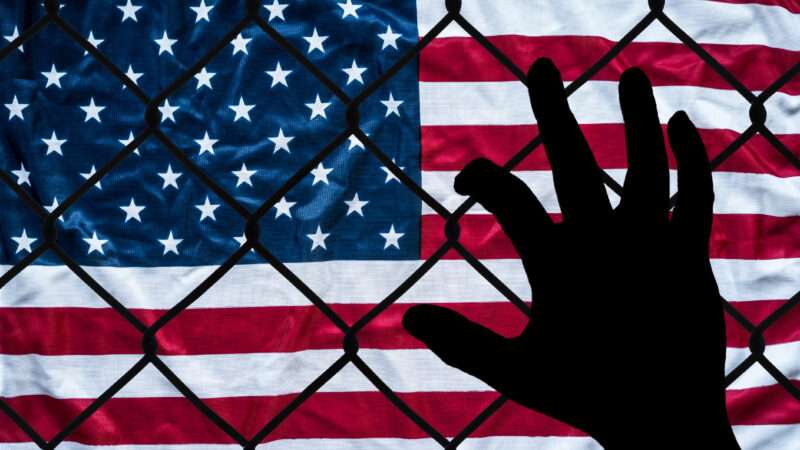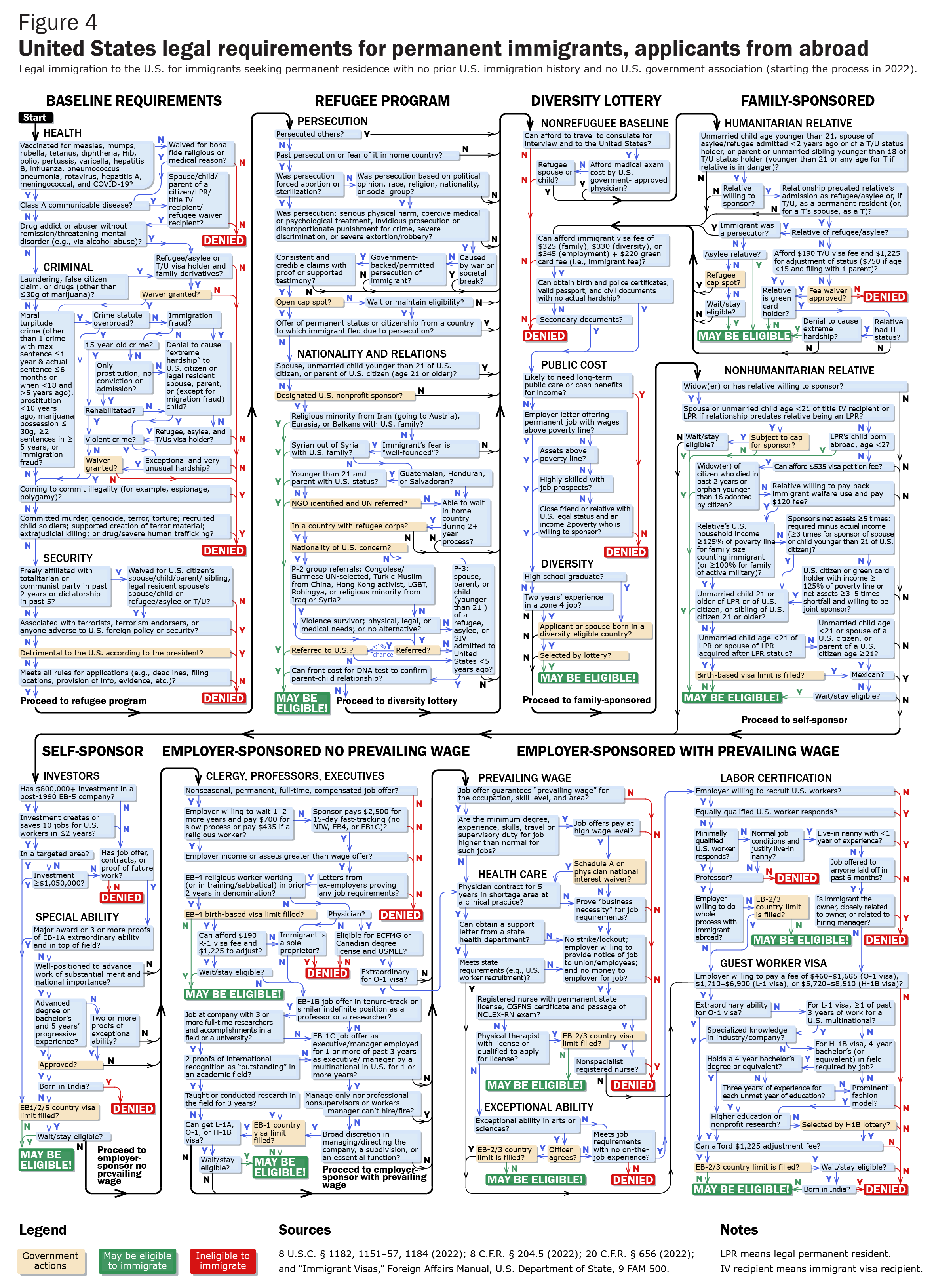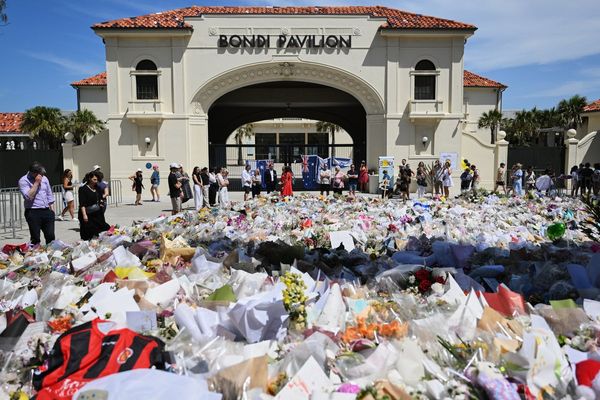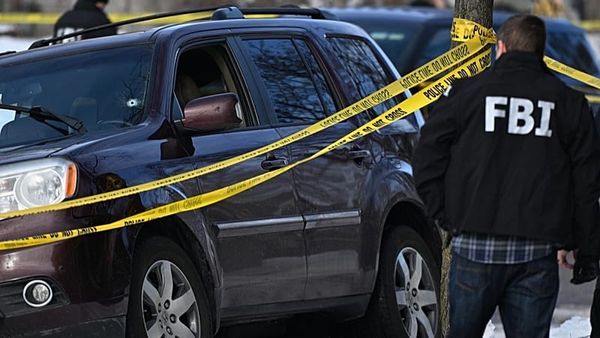
There's no doubt that there's a mess at the Southwestern border—and elsewhere as illegal migrants get passed around in a game of human hot potato. Driven by disastrous governments (hello, Venezuela) and hobbled economies, people arrive at the border in waves, creating humanitarian problems and concerns about who might be hiding among those legitimately seeking opportunity. There's little Americans can do about abusive foreign officials or the global chaos of recent years, but the federal government makes the problem worse by putting legal immigration out of reach for most so that a desperate run for the border is virtually the only way to enter the country.
For starters, it's worth knowing that those crowds at the border aren't reflected in the illegal immigrant population of the United States.
Crowds at the Border, But Not Inside the Country
"As of 2021, the nation's 10.5 million unauthorized immigrants represented about 3% of the total U.S. population and 22% of the foreign-born population," Pew Research noted in November. "These shares were among the lowest since the 1990s. Between 2007 and 2021, the unauthorized immigrant population decreased by 1.75 million, or 14%."
The Migration Policy Institute puts the number at roughly 11 million, using 2019 figures. Either way, this represents a decline from the 2007 peak of 12.2 million illegal immigrants.
Nor are migrants flooding particular states: "Only Florida and Washington saw increases to their unauthorized immigrant populations, while California and Nevada saw decreases," adds Pew (though some border communities have a different experience).
But those crowds at the border are undeniable. In October, Customs and Border Protection recorded 188,778 "migrant encounters" between ports of entry (meaning illegal crossings) along the southwest border. That's down 14 percent from September, but still impressive. Why are so many people flocking to the border to enter illegally instead of going through legal immigration procedures?
The answer is that for many of them that's the only way to get into the U.S.
Few Legal Pathways to Immigration
"America traditionally had few immigration restrictions, but since the 1920s, the law has banned most aspiring immigrants," David J. Bier wrote in a Cato Institute report published in June. "Today, fewer than 1 percent of people who want to move permanently to the United States can do so legally."
Bier breaks down the pathways remaining for legal immigration. Those include: the refugee program, which gives qualified applicants a 0.1 percent chance of being accepted for resettlement; the diversity lottery, which offers a 0.2 percent chance of success; family sponsorships, which are capped for anybody other than spouses, minor children, and parents of adult U.S. citizens leading to years-long waits; employment-based self-sponsorship available only to the wealthy or those whose work is "extraordinary" or of "national importance"; and limited, red-tape-bound employer sponsorships out of reach of all but the lucky and well-educated.
The chart of the byzantine requirements for legal immigration captures the problem well, like a maze puzzle with no real means of escape.

As we've learned again and again in the history of this country and all the others from which our ancestors came, if you make it difficult or impossible for people to legally do something they want to do, they'll find ways to do it illegally.
Denied a Legal Route, Migrants Come Illegally
"Immigration is now prohibited in a similar way to alcohol during Prohibition," Bier commented. "Although it had exceptions for religious, medical, or industrial purposes, alcohol prohibition outlawed all other sales. For both alcohol and immigration, the result of prohibition has been the same: widespread violations of the law, black markets, the spread of criminal organizations, arbitrary enforcement, government corruption, and massive government expenditures of taxpayer money to stop the violations."
So, with legal pathways to entering the United States out of reach of most would-be migrants, they turn to illegal means. That necessarily includes "coyotes"—smugglers who get people through migration routes and across borders for a fee. They operate in the underworld with all that implies; they might be decent people just working a job, or they could be dangerous and abusive.
"Despite the illicit nature of their work and being cast as villains in the public eye, smugglers have complex, multifaceted relationships with their migrant clients," Jasper Gilardi wrote in 2020 for the Migration Policy Institute. "At times, the relationship can be mutually beneficial or even lifesaving; at others, it can be predatory and dangerous. Abandonment, extortion, kidnapping, and even death are common."
Any time you hand an area of life to criminal operators, you surrender much accountability as well. In the case of illegal immigration, you also give up control over who mixes into crowds cutting border fences. Customs and Border Protection says its "top priority is to keep terrorists and their weapons from entering the United States" and documents arrests of "criminal noncitizens." But it's easier for potential undesirables to hide in large crowds swelled by innocent people who have no other pathways to entry than it would be if legal immigration were easier and more aspiring migrants were at home filing paperwork.
Ease Legal Immigration to Fix the Border Crisis
Members of Congress are once again discussing immigration issues. But given public concerns (41 percent of Americans want immigration decreased, 26 percent want it increased, and 31 percent favor keeping it at current levels, according to Gallup), the conversation is framed in terms of security and tighter restrictions.
That's too bad, because unless Congress finds a way to make the country an unattractive place to live, or at least less attractive than their old homes in poor and authoritarian countries (they've been working on it!), they'll keep coming anyway. If they can't come legally, they'll come illegally. Not wanting more immigration and trying to block it by law doesn't mean we won't get it; it just means that we'll get it flowing around the law enforcers.
"Congress should overhaul the system to open legal immigration for any person willing to work to contribute to the success of the United States," suggests Cato's Bier.
That's a good place to start. Easier pathways for legal immigration might be the most effective way to fix the border crisis.
The post Fix the Border Crisis by Making Legal Immigration Easier appeared first on Reason.com.







